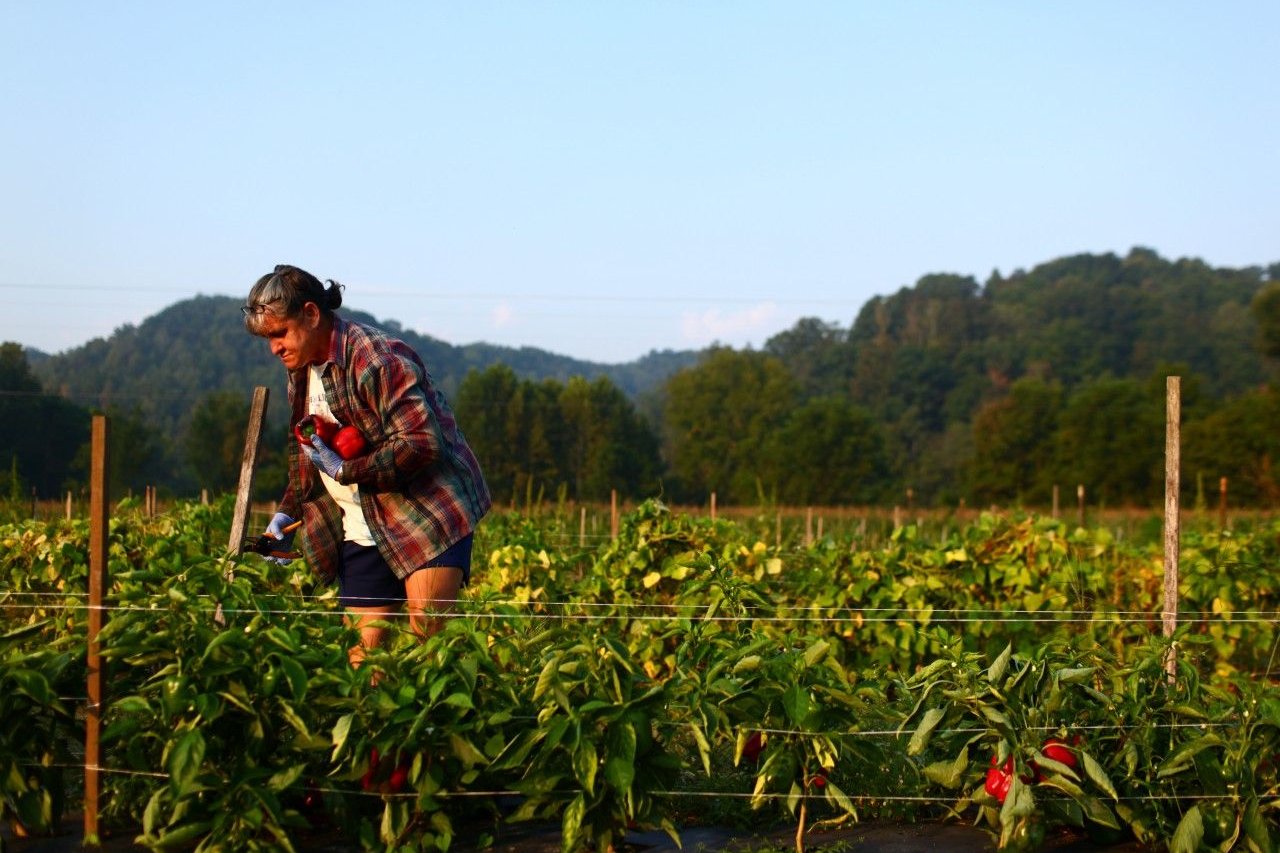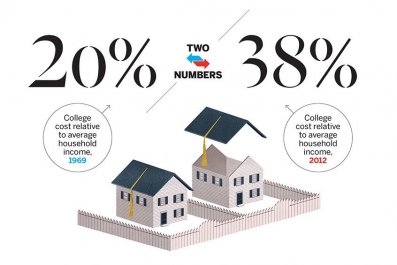Todd Howard remembers the local store in Hippo, Ky., where he grew up. "They sold TVs, guns, bread and milk," he says. "The essentials." Things aren't all that different in his hometown today—smack dab in the middle of coal country, Hippo remains a rural food desert where access to healthy foods is slim to none.
However, five years ago, Howard did something to change things in Hippo. Just made redundant from his coal industry job, Howard became an entrepreneur-farmer in need of a market for the three acres of corn he planted. Along with a handful of other local growers, he resuscitated the defunct Floyd County Farmer's Market in nearby Prestonsburg, Ky. Now, every Saturday from May through August, customers line up as the farmers unload the freshly picked greens, beans and homegrown tomatoes. The number of farmers participating in the market and the customer base grows with each season.
"Once they come, it becomes a habit," says Howard, who recently added a family of Duroc pigs to his daily chores. "They come nearly every Saturday just to see what's on the menu, so to speak."
Most people think of food deserts as places like inner-city Detroit or east Los Angeles, but they exist throughout rural America, even in communities where produce and fruit are grown. In urban areas, the U.S. Department of Agriculture considers a food desert an area with no ready access to a store with fresh and nutritious food options within one mile. In rural America, a desert is defined as 10 miles or more from the nearest supermarket. It's estimated there are more than 23 million people, more than half of them low-income, living in food deserts. Lack of access to healthy foods and consequent poor diet leads to higher levels of obesity and chronic conditions like diabetes and heart disease. And with recent cuts to the food stamp program—an average of $90 a month per recipient—achieving a healthy diet will be a lot more difficult for the poor.
Health advocates say a more apt description of these carrot- and cantaloupe-deprived environs might be "food swamp." Swamps are generally saturated in fast-food chains offering high-fat and high-sugar value meals, and/or gas station convenience stores that seemingly pump out Red Bulls and roller food on a conveyor belt. Fresh food exists in rural food deserts but it tends to takes a dip in the Fryolator first.
"It's about overwhelming access to really-bad-for-you foods," says Mark Swanson, a social anthropologist at the University of Kentucky. "People tend to buy and eat what's available."
Yet, there's a glimmer of sunshine on all that swampland. From the Appalachian hills to the flatlands of American Indian reservations out west, grassroots organizers and public health advocates are digging in (sometimes literally) to transform rural food deserts. Cooperative extension agents (agricultural experts funded through USDA programs), faith-based groups, and dedicated locavores work like physicians staging health "interventions" by way of farmers' markets, community gardens, food canning classes, and farm-to-school projects, infusing rural pockets with fresh and tasty fruits and vegetables.
Howard says he had no notion about a local food "movement" when he started growing and selling vegetables. His reasons for rebooting the farmers' market were purely financial. "I didn't know what we started five years ago would morph into a place where so many people come together every Saturday to stop and talk. There've been a lot of reunions of folks," he says. The seed he planted now makes him proud: a communion of extended families, neighbors and former classmates brought together by a modest farmers' market.
Dawn Newman, American Indian and tribal-partnership liaison with the University of Minnesota extension service, oversees the master gardening program on the heavily forested Fond du Lac reservation in Wisconsin. About 4,000 members of the Fond du Lac Band of Lake Superior Chippewa are scattered across the rural landscape. In addition to supporting the tribe's tradition of gathering mushrooms, wild rice, and maple syrup tapping, she secures USDA grants for gardening projects. Last year they created a farm-to-school and community garden program that included a community supported agriculture component, which provided free shares of produce for anyone who signed up. Not exactly a resounding success, says Newman, who was puzzled that many members did not even bother to pick up the food. Was it because it was free? Did they not know how to cook it?
"Historically, I would say that after the trauma they experienced as a community, living on reservations in poverty conditions and being dependent on government commodities, people became more accustomed to eating shelf-stable foods—things from cans they just open up and heat," says Newman. "It's what many people are used to. Changing that mindset to choose the healthier foods is a challenge. It's not something that you can do overnight."
Like Newman, others working in rural food swamps say just having access to healthy foods is one thing; actually getting people to choose that healthy food takes time. In other words, you can lead a horse to water, but you can't make him eat arugula.
Swanson and his research partner, Nancy Schoenberg, approach food access and health inequities scientifically in several Appalachian counties. One of these, Letcher County in Kentucky, is in coal mining country. With a population of about 30,000, Letcher has been ravaged by prescription drug abuse and its health and social consequences. In their decade-long research there, Swanson and Schoenberg were surprised to discover a great degree of awareness about the USDA food pyramid and healthy lifestyle habits to prevent conditions like obesity, heart disease, cancer, and diabetes. Despite this knowledge, not many people maintain eating and exercise habits consistent with the guidelines.
"Peoples' lives in rural America look in many ways like urban or suburban peoples' lives," says Schoenberg, a medical anthropologist at the University of Kentucky College of Medicine. "They have jobs, soccer practice, ballet. They are spending their time working and doing but not necessarily cooking in their kitchens and healthy convenience foods aren't available."
Appalachian communities are disproportionately affected by the leading causes of morbidity and mortality, and the region has some of the nation's highest heart disease death rates, according to the Centers for Disease Control and Prevention. Schoenberg points to additional data that indicate that only 22 percent of Appalachian Kentuckians receive the recommended daily intake for fruits and vegetables, between 62 percent and 76 percent are overweight or obese, and about half report sedentary lives.
Schoenberg and Swanson, who has hands-on experience in farm-to-school programming, researched possible solutions to the suboptimal lifestyle with community members and found interest in home gardening. "Research suggests that gardeners consume healthier diets and are more physically active," says Schoenberg. A goal is to develop a science-based gardening "intervention" in collaboration with a faith-based community group Faith Moves Mountains, Grow Appalachia (a sustainable gardening nonprofit of Berea College in Berea, Ky.), along with county extension educators and master gardener volunteers from the University of Kentucky. If all goes as planned, gardens will be plowed and planted as early as this spring.
"I think we can learn a great deal from studying the Appalachian community," says Schoenberg. "How these smart, caring people make do with very limited resources, how they draw on their talents and work hard to build a better community."























